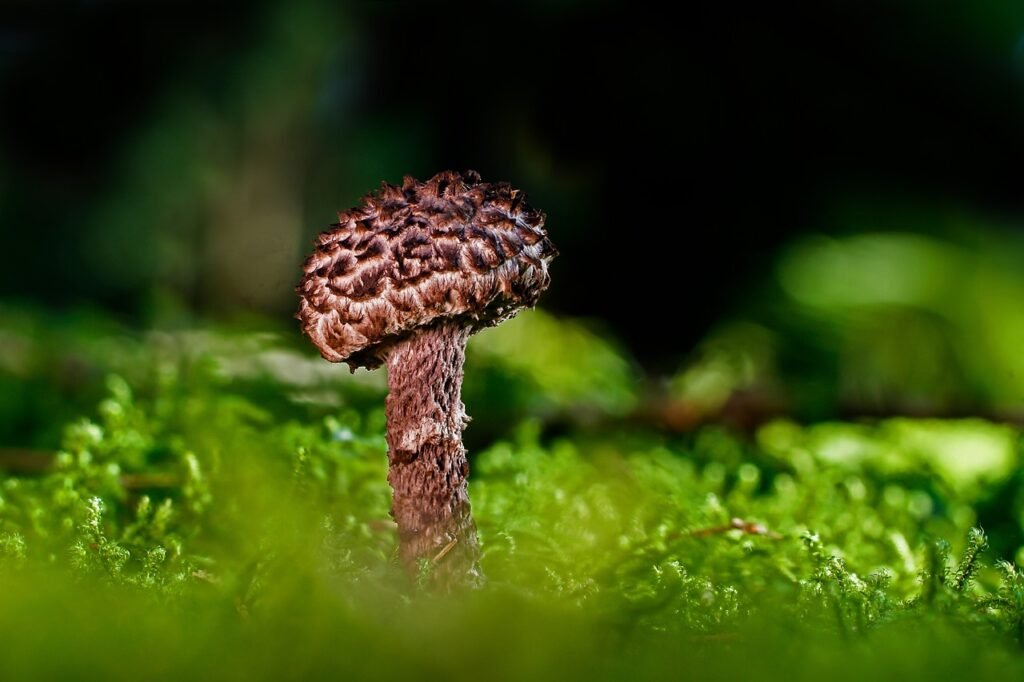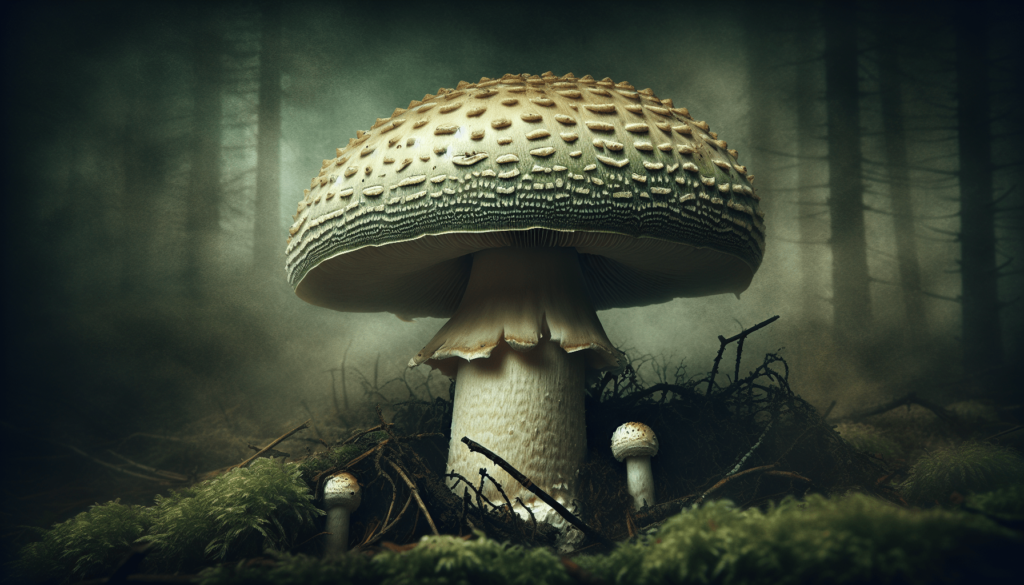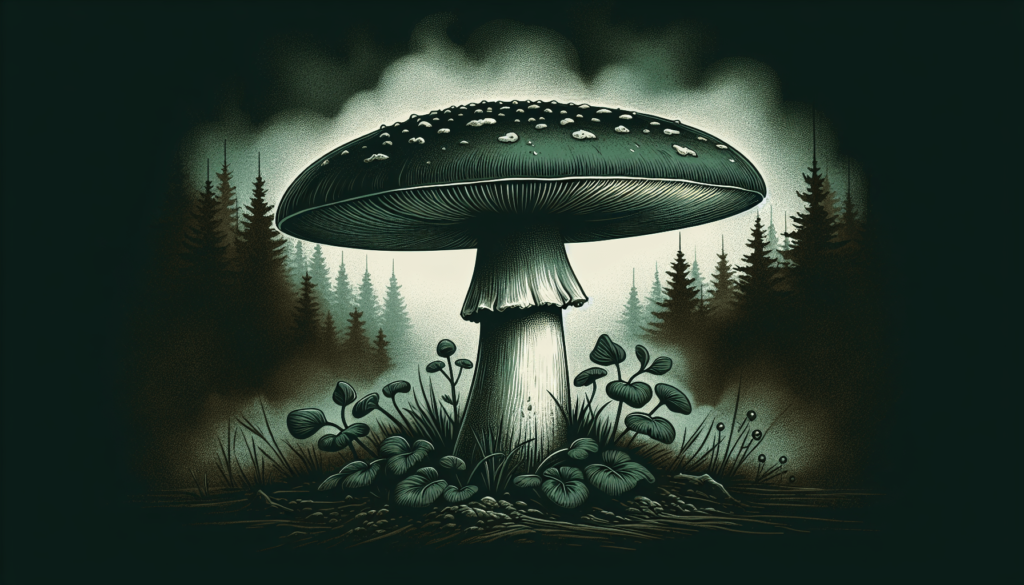You’re about to dive into the fascinating and slightly eerie world of one of nature’s most dangerous fungi—the death cap mushroom. This article, titled “What Makes The Death Cap Mushroom So Toxic?” breaks down the unique and harmful properties that make this seemingly ordinary mushroom so perilous. You will uncover the biological mechanisms behind its toxicity, including the deadly compounds it contains and how they interact with the human body. Through this captivating read, you’ll gain a deeper understanding of why caution is paramount when encountering this lethal fungus in the wild. Have you ever wondered what makes the death cap mushroom so toxic? It’s fascinating and chilling to think about how something so seemingly benign can be so deadly. Mushrooms are generally associated with culinary delight or an intriguing part of a walk through the woods, but the death cap mushroom, or Amanita phalloides, is a fascinating exception. Buckle up as we dive deep into the infamous world of this perilous fungi.
What is the Death Cap Mushroom?
The death cap mushroom (Amanita phalloides) is infamous in the mycology world. Recognizable by its smooth cap, which can range in color from greenish to yellow-brown, it’s a mushroom that also holds a sinister reputation. Found mainly in Europe but now widespread globally due to its introduction in various countries, this lethal fungus has quite a story.
Identification Characteristics
Understanding the specific physical characteristics can help you steer clear of this deadly substance. Here are some key features:
| Feature | Description |
|---|---|
| Cap | Smooth and can range from greenish to yellow-brown. Often sticky when wet. |
| Gills | White and free from stalk. |
| Stalk | Typically white; often has a bulbous base with a volva (cup-like structure). |
| Spore Print | White |
| Odor | When fresh, reported to have a faint, unpleasant smell. |
Common Habitats
The death cap mushroom is typically found in deciduous forests, often near oaks, chestnuts, and other hardwood trees. Its mycorrhizal relationship with these trees ensures a widespread growth, but it can also be found in areas where these trees have been introduced, leading to broader geographical spread.

Why is the Death Cap Mushroom So Toxic?
The death cap’s toxicity is primarily due to a group of potent toxins known as amatoxins. The most dangerous of these is alpha-amanitin.
Amatoxins: The Main Culprit
Amatoxins are a group of approximately 10 toxic compounds found in several genera of mushrooms, but they are particularly concentrated in the death cap. Here’s what makes them so lethal:
| Toxin | Description |
|---|---|
| Alpha-amanitin | Blocks RNA polymerase II, inhibiting protein synthesis, leading to cell death. Principal toxin in the death cap. |
| Beta-amanitin | Secondary toxin in the death cap. Less toxic than alpha-amanitin but contributes to overall lethality. |
| Phalloidin | Stabilizes actin filaments, disrupting cell membrane integrity, and contributing to cellular damage and death. Less prevalent than amatoxins. |
Disruption of Cellular Processes
Alpha-amanitin, the most potent toxin within the death cap, specifically targets the liver cells. It blocks the action of RNA polymerase II, an enzyme crucial in the synthesis of messenger RNA (mRNA). Without mRNA, cells cannot produce proteins, leading to cell apoptosis (death).

The Deadly Mechanism of Action
The deadly mechanism of the death cap mushroom is a slow and devastating one. The toxins within the mushroom follow a grim pathway once ingested.
Initial Symptoms
The first symptoms of death cap poisoning typically appear 6 to 12 hours after ingestion and often include nausea, vomiting, and severe abdominal pain.
Latent Phase
Following these initial symptoms, a deceptive and apparent recovery phase ensues. This phase, lasting 24 to 48 hours, might lead one to believe they’re improving, but the damage within the body continues unimpeded.
Severe Symptoms and Organ Failure
During the final phase, severe symptoms manifest as the toxins cause hepatic (liver) injury, renal (kidney) failure, and even death. Medical intervention at this stage usually requires aggressive treatment, such as liver transplants and dialysis.

Prevention and Awareness
While the science behind the toxicity of the death cap mushroom is morbidly fascinating, the focus should always be on prevention and awareness. Here are steps you can take:
Educating Your Community
Awareness is critical in preventing accidental ingestion. Educational programs, local foraging clubs, and community newsletters can all help educate people on the dangers of these toxic mushrooms.
Safe Foraging Practices
If you’re a forager, always stick to mushrooms you can positively identify, and cross-check your finds with experts. When in doubt, leave it out. Remember, some edible mushrooms have toxic look-alikes.
Emergency Measures
If you suspect someone has ingested a death cap mushroom, immediate medical attention is crucial. Here’s a brief guide on what to do:
- Seek Immediate Medical Help: Contact emergency services right away.
- Do Not Induce Vomiting: This can exacerbate the situation.
- Activated Charcoal: If available, activated charcoal can be administered as it may absorb some of the toxins.

Historical Cases and Cultural Impact
The death cap mushroom has been a silent killer throughout history. Its potent lethality has left a significant mark on culture and medical practice.
Historic Poisonings
| Case | Description |
|---|---|
| Pope Clement VII (1534) | Believed to be poisoned by a death cap mushroom meal. |
| Roman Emperor Claudius (54 AD) | Speculated to have died from eating death cap mushrooms. |
Medical Advancements
Cases of death cap poisoning have spurred advancements in medical treatments and toxicology. Liver transplant technology, for instance, has seen improvements partly due to the necessity for treating victims of amatoxin poisoning.

Conclusion
The death cap mushroom is an admonition from nature about the delicate balance between beauty and danger. While its toxins are unseen and its appearance can be inviting, the peril it poses is real and immediate. Armed with knowledge and caution, you can ensure your outdoor adventures and culinary experiments remain safe and enjoyable.
Remember, curiosity and knowledge are your best tools for preventing a deadly mistake when it comes to foraging and encountering wild mushrooms. Stay informed, stay safe, and share this vital information with others.
